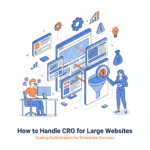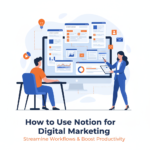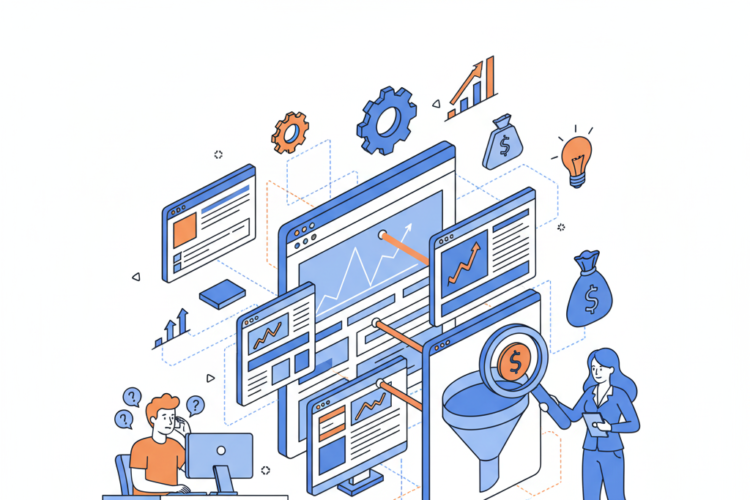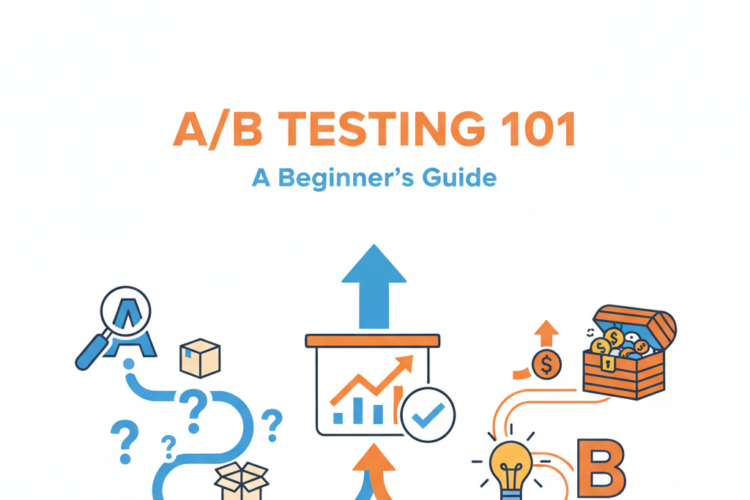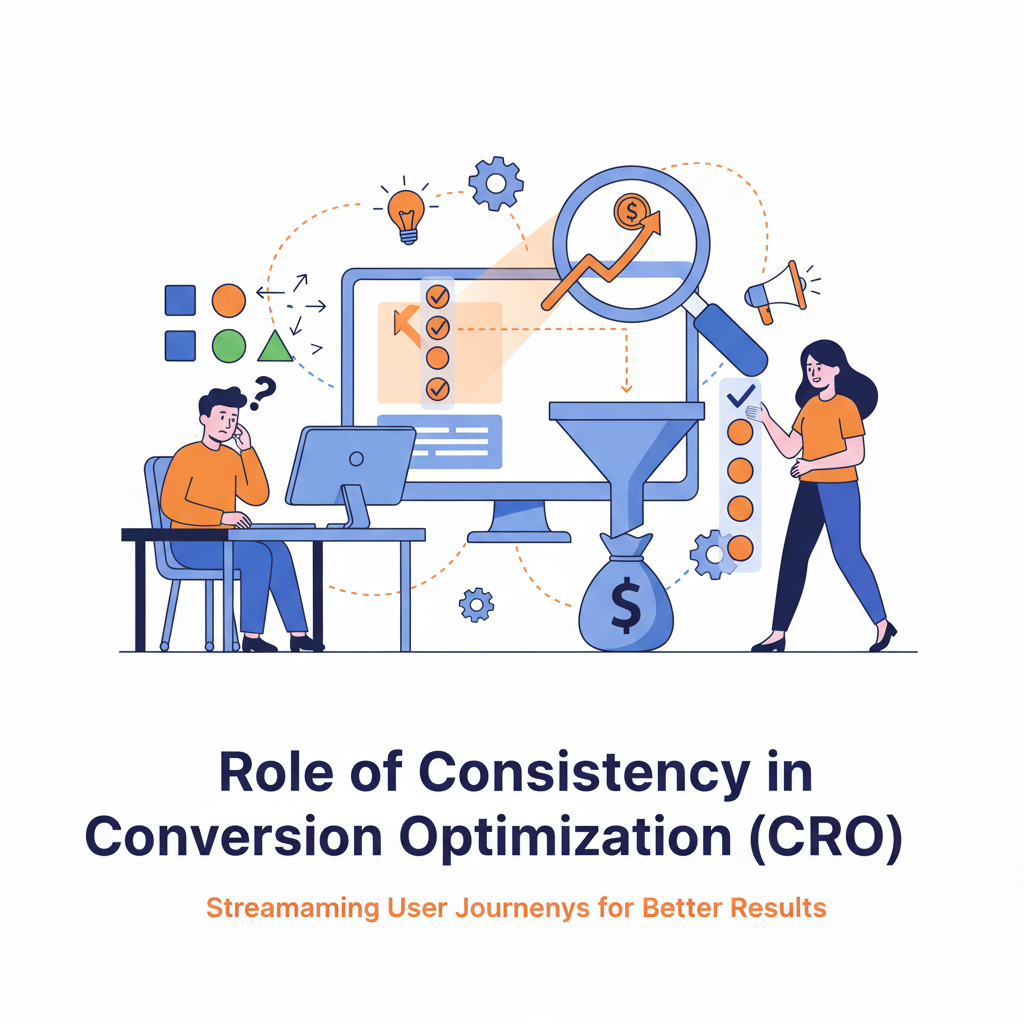
The Role of Trust and Credibility in Conversion Optimization
Introduction: The Trust Imperative in Digital Commerce
Every conversion represents a moment of trust. Whether a visitor is purchasing a product, subscribing to a newsletter, booking a consultation, or downloading a whitepaper, they’re making a decision to trust you with something valuable—their money, their email address, their time, or their personal information.
In an era of sophisticated scams, data breaches, misleading advertising, and online fraud, consumer skepticism has never been higher. Studies consistently show that lack of trust is one of the primary reasons visitors abandon shopping carts, leave websites, and choose competitors. Conversely, establishing strong trust and credibility can dramatically increase conversion rates, often by 50-200% or more.
This comprehensive guide explores the psychology of online trust, the specific elements that build credibility, and practical strategies for optimizing every stage of your conversion funnel to establish, reinforce, and leverage trust for sustainable business growth.
Understanding the Psychology of Online Trust
Why Trust Matters More Online Than Offline
The Anonymity Problem
In physical retail, customers can see your store, interact with employees face-to-face, physically examine products, and immediately leave with their purchase. These tangible elements naturally build trust. Online transactions lack these reassurances—customers can’t see you, touch products, or immediately verify authenticity.
The Risk Perception Gap
Online purchases involve multiple perceived risks:
Financial Risk: Will my payment information be stolen? Will I receive what I paid for? Can I get my money back if something goes wrong?
Performance Risk: Will the product work as advertised? Will it meet my needs? Are the reviews authentic?
Privacy Risk: What will happen to my personal data? Will I be spammed? Will my information be sold?
Time Risk: Will delivery take forever? Will customer service respond if there’s a problem?
Social Risk: Will this purchase reflect poorly on me? Is this brand reputable?
Psychological Risk: Will I regret this purchase? Am I being manipulated or deceived?
Every friction point in your conversion funnel that fails to address these risks reduces your conversion rate.
The Trust Equation
Researchers have identified four key components that determine trustworthiness:
Credibility = Expertise + Reliability
Do you know what you’re talking about? Can you deliver on your promises consistently?
Intimacy
Do you understand your customer’s needs? Do you communicate in a way that resonates personally?
Self-Orientation
Are you focused on helping the customer, or just making a sale? Is your interest genuine or purely transactional?
Trust Formula:
Trust = (Credibility + Reliability + Intimacy) / Self-Orientation
The denominator is crucial—even strong credibility and reliability can’t overcome excessive self-orientation (appearing too salesy or self-interested).
The Two Types of Trust Signals
Cognitive Trust (Head)
Rational, evidence-based trust built through:
- Security certifications and badges
- Third-party verifications
- Data and statistics
- Professional credentials
- Industry awards and recognition
- Money-back guarantees
- Privacy policies and terms
Affective Trust (Heart)
Emotional trust built through:
- Brand personality and values alignment
- Storytelling and authenticity
- Customer testimonials with emotional resonance
- Transparency and vulnerability
- Consistent communication tone
- Social proof from similar people
- Responsive customer service
Effective conversion optimization addresses both types simultaneously.
Building Foundational Trust: First Impressions
Professional Design and User Experience
You have 0.05 seconds to make a first impression online. Visual design immediately signals legitimacy or triggers skepticism.
Design Elements That Build Trust:
Visual Polish and Consistency
Clean, modern design with consistent branding, colors, fonts, and spacing signals professionalism and attention to detail. Inconsistent design, broken layouts, or outdated aesthetics trigger immediate skepticism.
High-Quality Imagery
Professional product photos, authentic team photos, and high-resolution graphics demonstrate investment and legitimacy. Stock photos that appear on thousands of other sites, pixelated images, or obvious template photos undermine credibility.
Intuitive Navigation
Visitors should never feel lost or confused. Clear navigation, logical information architecture, and intuitive pathways signal that you respect users’ time and intelligence.
Mobile Optimization
Over 60% of web traffic is mobile. A broken or difficult mobile experience signals you’re either outdated or don’t care about user experience—both trust killers.
Fast Loading Speed
Sites that load slowly frustrate users and suggest poor technical infrastructure. 53% of mobile users abandon sites that take longer than 3 seconds to load.
Design Red Flags That Destroy Trust:
- Aggressive pop-ups appearing immediately
- Intrusive auto-playing videos with sound
- Misleading clickbait headlines
- Excessive ads cluttering the page
- Broken links or missing images
- Spelling and grammatical errors
- Inconsistent or garish color schemes
- Cluttered, overwhelming layouts
Clear and Honest Communication
Transparent Value Propositions
Visitors should immediately understand:
- What you offer
- Who it’s for
- What makes you different
- What value they’ll receive
- What action they should take
Vague, hyperbolic, or confusing messaging creates doubt and friction.
Honest Product Descriptions
Overpromising destroys trust faster than underdelivering on modest promises. Be specific about:
- What’s included and what’s not
- Actual capabilities and limitations
- Required complementary products or services
- Expected results and typical outcomes
- Time commitments or learning curves
Realistic Imagery
Product photos should accurately represent what customers receive. If you’re using enhanced or idealized images, note that clearly. Return rates and negative reviews from disappointed customers cost far more than honest representation.
Straightforward Pricing
Hidden fees, surprise charges, and complex pricing structures trigger immediate distrust. Best practices:
- Display total costs upfront, including shipping and taxes
- Explain why prices are structured as they are
- Offer transparent comparisons if multiple options exist
- Never use dark patterns to hide costs until checkout
About Pages and Company Transparency
Humanizing Your Brand
About pages are typically among the most-visited pages on websites, yet many businesses neglect them. Strong about pages include:
Origin Story
Why was your company founded? What problem were you trying to solve? What’s your mission beyond profit?
Stories create emotional connections and demonstrate authentic motivation rather than pure commercial interest.
Team Information
Real photos, names, and brief bios of key team members humanize your organization. Visitors trust people, not faceless corporations.
Include:
- Founder/leadership bios with relevant experience
- Team photos (real, not stock)
- Personal details that create connection (backgrounds, interests)
- LinkedIn profiles or professional credentials
Physical Location
Even for online-only businesses, displaying a real address (not just a PO box) significantly increases trust. It signals you’re not hiding and can be held accountable.
Contact Information
Multiple contact methods—phone number, email, physical address, live chat—demonstrate accessibility and willingness to engage. The easier you are to reach, the more trustworthy you appear.
Company Values and Culture
Articulate what you stand for beyond your products. Modern consumers increasingly choose brands aligned with their values.
Milestone and Achievements
Years in business, customers served, industry recognition, or certifications demonstrate track record and external validation.
Trust Elements Throughout the Conversion Funnel
Homepage Trust Signals
Your homepage must quickly establish legitimacy for first-time visitors.
Above-the-Fold Elements:
Trust Badges and Certifications
Prominently display:
- Security certificates (SSL, Norton, McAfee)
- Payment processor logos (Visa, Mastercard, PayPal)
- Industry certifications and memberships
- Privacy compliance (GDPR, CCPA)
- Awards and recognition
Place these near value propositions or CTAs where trust is most critical for decision-making.
Social Proof Summary
Quick credibility indicators:
- “Trusted by 50,000+ customers”
- “Rated 4.8/5 stars from 2,341 reviews”
- Recognizable client logos (B2B)
- Media mentions or “As featured in” logos
Clear Value Proposition
Within 3-5 seconds, visitors should understand what you do and why they should care. Clarity builds trust; confusion creates doubt.
Product and Service Pages
These pages require maximum trust-building because they’re closest to conversion decisions.
Detailed Product Information
Comprehensive Descriptions
Go beyond basic features. Include:
- Detailed specifications
- Use cases and applications
- What’s included in the box
- Compatibility requirements
- Dimensions and materials
- Care instructions
- What problems it solves
Multiple High-Quality Images
Minimum 5-7 photos showing:
- Multiple angles
- Product in use
- Scale reference
- Detail close-ups
- Packaging
- Any accessories or components
Video Demonstrations
Videos showing products in action dramatically increase conversion rates (up to 80% in some studies). They provide visual proof of quality, functionality, and realistic expectations.
Customer Reviews and Ratings
Reviews are among the most influential trust factors:
Quantity Matters: Products with 50+ reviews convert significantly better than those with just a few, even if average ratings are identical.
Authenticity Signals:
- Include both positive and negative reviews (all 5-stars seems fake)
- Show reviewer names, locations, and dates
- Include photos from customers (hugely powerful)
- Verify purchase indicators
- Detailed reviews (not just “Great product!”)
Response to Negative Reviews: How you handle criticism matters more than the criticism itself. Professional, helpful responses to negative reviews demonstrate:
- You’re listening
- You care about customer satisfaction
- You take responsibility
- You’re transparent about problems
- You work to resolve issues
Product Guarantees and Warranties
Risk reversal is one of the most powerful trust-building tactics:
Money-Back Guarantees: 30-day, 60-day, or even lifetime guarantees remove purchase risk. Studies show generous guarantees increase sales more than they increase returns.
Warranty Information: Clear warranty coverage demonstrates product confidence and manufacturer backing.
Satisfaction Promises: “Love it or return it” type language creates psychological safety.
Try Before You Buy: Free trials, samples, or demo periods let customers verify value before committing.
Shopping Cart and Checkout
Cart abandonment rates average 70%—trust issues are a primary cause.
Security Assurance
SSL Certificates: The padlock icon and “https://” are mandatory. Browsers now warn users about non-secure sites, immediately destroying trust.
Security Badges: Place trust badges directly on checkout pages, near payment information entry. Norton, McAfee, BBB, and payment processor logos significantly reduce abandonment.
Privacy Assurances: Clear statements about data protection: “We never share your information” or “Your payment details are encrypted and secure.”
Transparent Checkout Process
Progress Indicators: Show how many steps remain in checkout. Uncertainty creates anxiety and abandonment.
No Surprise Charges: Display all costs—product, shipping, taxes—before customers enter payment information. Hidden fees discovered at the final step cause 48% of cart abandonment.
Guest Checkout Option: Forced account creation increases abandonment by 25%. Allow guest checkout with optional account creation after purchase.
Multiple Payment Options: Offering various payment methods signals legitimacy and accommodates preferences:
- Major credit cards
- PayPal (adds their trust factor)
- Digital wallets (Apple Pay, Google Pay)
- Buy now, pay later options (Klarna, Afterpay)
- Bank transfers for B2B
Clear Return and Refund Policies
Link prominently to return policies from checkout pages. Knowing they can return products if needed reduces purchase anxiety.
Contact Information
Display customer service phone number, email, or chat option during checkout. Knowing help is available if needed provides reassurance.
Order Confirmation and Follow-Up
Immediate Email Confirmation: Within seconds of purchase, send detailed confirmation with:
- Order number
- Items purchased
- Pricing breakdown
- Expected delivery date
- Tracking information (when available)
- Customer service contact details
Post-Purchase Communication: Regular updates about order status, shipping, and delivery maintain trust during the fulfillment process.
Landing Pages for Campaigns
Dedicated landing pages for ads, email campaigns, or specific offers require trust-building from scratch since visitors may not know your brand.
Consistency with Ads
Landing pages must match the message, design, and offer from the ad or email that brought visitors. Inconsistency triggers immediate distrust: “This isn’t what I clicked on.”
Social Proof Specific to Offer
Include testimonials or case studies directly related to the specific offer or campaign, not just generic company praise.
Authority and Credibility Markers
Without your full site context, landing pages need concentrated trust signals:
- Expert credentials or certifications
- Media logos if featured
- Industry awards
- Client logos
- Statistical proof of results
Risk Reversal
Standalone landing pages benefit even more from guarantees, free trials, or no-commitment offers since visitors can’t explore your broader site to build trust gradually.
Advanced Trust-Building Strategies
Customer Testimonials and Case Studies
The Anatomy of Effective Testimonials
Generic praise (“Great company!”) provides minimal trust value. Powerful testimonials include:
Specific Results and Outcomes
“This software saved us 15 hours per week and reduced errors by 87%” is far more credible than “This software is amazing!”
Context and Situation
Who is this person? What was their challenge? Why is their opinion relevant? “As a small business owner struggling with inventory management…” creates relatability.
Transformation Story
Before and after narratives are compelling: “We went from barely breaking even to 40% profit margins in six months.”
Attribution and Verification
Full names, titles, companies, and ideally photos or video make testimonials believable. “John S.” feels fake; “John Smith, VP of Operations at TechCorp Inc.” feels real.
Addressing Specific Objections
Strategically place testimonials that counter common hesitations:
- Near pricing: “I thought it was expensive until I realized how much time it saves”
- Near commitment CTA: “I was skeptical about signing up, but the trial convinced me”
- For technical products: “I’m not technical, but the interface was surprisingly easy”
Case Study Best Practices
In-depth case studies work especially well for B2B, high-ticket, or complex purchases:
Problem-Solution-Results Format:
- Client background and initial challenge
- Why they chose you
- Implementation process
- Specific, measurable results
- Client quotes throughout
Multiple Formats:
- Written case studies (800-1500 words)
- Video case studies (2-5 minutes)
- Downloadable PDF versions
- Infographic summaries
Quantifiable Metrics: Include specific numbers: revenue increases, cost savings, time saved, efficiency improvements, growth percentages.
Trust Through Content Marketing
Educational Content Demonstrates Expertise
Providing valuable information without immediate sales pressure builds authority and goodwill:
Blog Content: In-depth guides, how-to articles, industry insights demonstrate knowledge and willingness to help.
Free Resources: Templates, checklists, calculators, tools, or courses showcase expertise while providing tangible value.
Webinars and Videos: Live or recorded educational content puts faces and personalities to your brand.
Research and Original Data: Publishing industry research or surveys positions you as a thought leader.
The Reciprocity Effect
When you provide value freely, people feel psychologically inclined to reciprocate. This doesn’t manipulate—it builds genuine relationships based on mutual value exchange.
Transparency and Vulnerability
Behind-the-Scenes Content
Showing your process, workspace, team interactions, or even challenges humanizes your brand and demonstrates authenticity.
Admitting Limitations
Paradoxically, acknowledging what you’re NOT good at or who you’re NOT right for increases trust by demonstrating honesty and customer-centricity.
“Our service isn’t ideal for companies with fewer than 20 employees” or “If you need same-day delivery, we’re not the right fit” shows you prioritize fit over sales.
Sharing Failures and Lessons
Stories of challenges overcome, mistakes learned from, or pivots made demonstrate authenticity and resilience.
Real-Time Trust Signals
Live Chat
Offering immediate human interaction significantly reduces purchase anxiety:
Best Practices:
- Respond within 30-60 seconds
- Use real names and photos for chat agents
- Offer proactive chat on key pages (pricing, checkout)
- Keep tone helpful, not pushy
- Provide transcripts for future reference
Activity Notifications
“Sarah from Boston just purchased this item” or “12 people are viewing this product” creates social proof and urgency (when honest—fake notifications destroy trust).
Low Stock Indicators
Genuine scarcity can encourage action: “Only 3 left in stock” (but only if true—false scarcity is unethical and often illegal).
Recent Review Feeds
Displaying recent reviews or testimonials in sidebars or pop-ups shows ongoing customer satisfaction.
Trust for Different Business Models
E-commerce Trust Factors
Product Authenticity Assurance
For branded products, confirm authorization:
- “Authorized dealer” or “Official retailer” designations
- Direct manufacturer relationships
- Authentication guarantees
Flexible Return Policies
E-commerce especially needs generous returns due to inability to physically examine products:
- Free return shipping
- Extended return windows (60-90 days)
- Hassle-free process with printable labels
- Clear, simple instructions
Detailed Sizing and Fit Information
For apparel: sizing charts, fit videos, model measurements, customer photos showing how items fit.
Packaging and Presentation
Professional, branded packaging signals quality and creates positive unboxing experiences that generate social sharing.
B2B and Service Business Trust
Expertise Demonstration
B2B buyers need confidence in your capability:
Credentials and Certifications: Industry-specific certifications, technical qualifications, professional memberships.
Thought Leadership: Published articles, speaking engagements, industry contributions, patents or innovations.
Client Lists: Recognizable company logos (with permission) demonstrate trust from established organizations.
Process Transparency
B2B buyers want to understand exactly what they’re buying:
Methodology Explanation: Describe your process, frameworks, or approach.
Timeline Clarity: Set realistic expectations for delivery, implementation, or results.
Roles and Responsibilities: Clarify what you do and what the client needs to do.
Pricing Transparency
While custom quotes may be necessary, explain:
- How pricing is determined
- What factors affect cost
- Typical ranges or starting points
- What’s included versus add-ons
References and Referrals
B2B often involves higher stakes, making references critical:
- Offer to connect prospects with existing clients
- Provide reference case studies
- Share LinkedIn recommendations
- Enable direct verification of claims
SaaS and Subscription Services
Free Trials and Freemium Models
Letting users experience value before paying is the ultimate trust-builder:
Best Practices:
- No credit card required for trials
- Full feature access during trial
- Clear indication of trial end date
- Helpful onboarding during trial
Product Demonstrations
For complex software:
- Video walkthroughs showing real usage
- Interactive demos or sandbox environments
- Guided tours highlighting key features
- Regular webinars showing advanced capabilities
Security and Data Privacy
SaaS handles sensitive business data, making security paramount:
Compliance Certifications:
- SOC 2 Type II certification
- ISO 27001 certification
- GDPR compliance
- Industry-specific certifications (HIPAA, PCI-DSS)
Security Information:
- Data encryption methods
- Backup and disaster recovery procedures
- Uptime guarantees
- Data ownership and portability
Transparent Terms
Subscription models require clarity:
- Easy cancellation process
- No hidden fees or automatic renewals without warning
- Clear upgrade/downgrade paths
- Data export options if canceling
High-Ticket and Luxury Products
Scarcity and Exclusivity
Premium products can leverage limited availability as a trust signal (when authentic):
- Limited editions
- Handcrafted or small-batch production
- Waiting lists for popular items
- Invitation-only access
Provenance and Craftsmanship
Detail the story behind high-value items:
- Materials sourcing
- Manufacturing process
- Artisan profiles
- Quality control measures
- Heritage and tradition
White-Glove Service
Premium expectations require premium support:
- Concierge-level customer service
- Personal account managers
- VIP experiences
- Extended or lifetime warranties
Social Proof from Aspirational Sources
Celebrity endorsements, influencer usage, or media features in prestigious publications validate luxury positioning.
Measuring and Optimizing Trust
Trust Metrics to Track
Conversion Rate by Page
Compare conversion rates for pages with strong trust elements versus those without. Identify where trust issues cause abandonment.
Cart Abandonment Rate
High abandonment (especially at payment stage) often indicates trust deficits. Track where in checkout flow users leave.
Time on Page for Key Pages
About pages, testimonial pages, or FAQ pages should show healthy engagement times, indicating visitors are researching and building confidence.
Exit Rates
High exit rates on specific pages might indicate trust concerns. Analyze what’s missing or concerning on those pages.
Customer Service Inquiry Patterns
Common questions often reveal trust gaps. If many people ask the same pre-purchase questions, address them proactively on product pages.
Return and Refund Rates
While some returns are inevitable, excessive rates might indicate misleading product descriptions or imagery damaging trust post-purchase.
Review Sentiment Analysis
Analyze review themes—are trust issues mentioned? Do customers express surprise at quality (suggesting low pre-purchase trust)?
Survey Feedback
Directly ask customers:
- “What almost prevented you from purchasing?”
- “What convinced you we were trustworthy?”
- “What concerns did you have before buying?”
A/B Testing Trust Elements
Systematically test trust components to quantify impact:
Test Ideas:
Trust Badge Placement: Test different positions (header, checkout, product pages) and quantities.
Testimonial Formats: Video versus text, with photos versus anonymous, specific versus general.
Guarantee Prominence: Test making guarantees more prominent versus standard footer placement.
About Page Variations: Test different team photo styles, story emphasis, or credential presentations.
Security Messaging: Test different security assurance language or visual presentations.
Social Proof Displays: Test various formats of displaying customer counts, review ratings, or recent purchases.
Continuous Trust Optimization
Regular Trust Audits
Quarterly, review your site through a trust lens:
Fresh Eyes Exercise: Have someone unfamiliar with your brand review your site and note every moment of doubt or confusion.
Competitor Comparison: How do your trust elements compare to competitors? Where are you stronger or weaker?
Broken Element Check: Ensure all trust elements still work—broken review widgets, expired certifications, or outdated testimonials undermine credibility.
Update Trust Elements Regularly
Current Testimonials: Replace old testimonials with recent ones (though classics can remain).
Updated Certifications: Renew and display current certification dates.
Recent Media Mentions: Highlight latest press coverage or awards.
Fresh Client Logos: B2B especially should showcase recent clients.
Current Statistics: Update “customers served,” “years in business,” or performance statistics.
Trust Recovery: Handling Mistakes and Crises
Even with perfect systems, issues arise. How you handle problems significantly impacts long-term trust.
When Things Go Wrong
Acknowledge Quickly
Speed matters in crisis response. Silence allows narratives to develop without your input. Acknowledge issues immediately, even before having full solutions.
Take Responsibility
Excuses, deflection, or blame-shifting destroy trust. Own mistakes completely: “We made an error” not “Mistakes were made.”
Communicate Transparently
Explain what happened, why, and what you’re doing to fix it. Transparency demonstrates respect and accountability.
Overcorrect
When resolving issues, exceed expectations:
- Full refunds plus goodwill gestures
- Expedited replacement shipping
- Discount on future purchases
- Personal apology from leadership
Implement and Communicate Changes
Show what you’ve learned: “Based on this experience, we’ve changed our process to…”
Turning Negative Reviews Around**
Negative reviews are opportunities to demonstrate character:
Respond Professionally:
- Thank them for feedback
- Apologize for their experience
- Offer specific solution
- Take conversation offline for resolution
- Follow up publicly when resolved
Example Response:
“Thank you for sharing your experience, Sarah. I’m so sorry the product didn’t meet your expectations. You’re absolutely right that our sizing chart wasn’t clear enough—we’ve updated it based on your feedback. I’d love to make this right. I’m sending you a return label and full refund today, plus a 20% discount on a future order if you’d like to give us another chance. I’ll email you directly in the next hour. – Mike, Customer Service Manager”
This response demonstrates accountability, action, and care—often converting critics into advocates.
Conclusion: Trust as a Competitive Advantage
In an increasingly crowded and skeptical marketplace, trust isn’t just another conversion optimization tactic—it’s your most valuable asset and potentially your strongest competitive advantage.
Competitors can copy your products, match your pricing, and replicate your marketing. They cannot easily duplicate years of accumulated trust, authentic customer relationships, and hard-earned reputation.
The businesses that thrive long-term aren’t necessarily those with the best products or lowest prices. They’re the ones customers trust—trust to deliver on promises, stand behind products, handle problems gracefully, protect privacy, and genuinely care about customer success beyond the sale.
Building trust requires:
- Consistency: Every interaction should reinforce trustworthiness
- Authenticity: Real stories, real people, honest communication
- Transparency: Clear about capabilities, limitations, and processes
- Reliability: Delivering what you promise, when you promise it
- Customer-centricity: Genuinely prioritizing customer needs over short-term profits
Start by auditing your current trust signals. Walk through your conversion funnel as a first-time visitor. Where would you hesitate? What would make you doubt? What information is missing? What seems too good to be true?
Then systematically address each trust gap, test improvements, and monitor results. Trust-building is neither quick nor easy, but the compounding returns—in conversion rates, customer lifetime value, referrals, and sustainable growth—make it the highest-ROI investment you can make in your business.
Remember: conversions are simply the visible outcome of trust. Build genuine trustworthiness first, communicate it effectively second, and conversions will follow naturally.
Author
